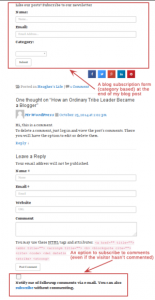— January 18, 2018
Google recently added new columns to their AdWords platform, all related to historical AdWords Quality Score data. These columns help AdWords account managers get the biggest bang for their buck by improving Quality Scores in key areas.
Not sure how to make sense of these? That’s okay. We’ll walk you through it.
First things first. What is AdWords Quality Score?
Good question. Quality Score is a rating given by AdWords to each keyword in your campaign to give users a general sense of the quality of your ads. Keyword are rated on a 1 to 10 scale.

These ratings are determined by several factors, all relating to the overall experience a user has from first seeing your ad, to clicking through to your landing page, and (hopefully) converting into a lead by submitting a form. The better the user experience, the higher the AdWords Quality Score. The higher the Quality Score, the more likely your ads are seen by potential customers. Quality equals quantity in Google Adwords.
So, how can you improve the quality score of your ad and the quantity of impressions it receives? Let’s dive in.
Develop tightly themed ad groups.
Ad groups consist of ads that target a shared set of keywords. A collection of ad groups make up a campaign. A key to increasing your Quality Score is to develop tightly themed ad groups under your campaign.
For instance, a dentist would create a “Teeth Whitening” campaign with ad groups for each of the types of teeth whitening they provide:
- laser teeth whitening
- at-home teeth whitening
- KöR whitening treatment
The purpose of each ad group is to provide the user with a focused and seamless experience from start to finish. Google recognizes this attention to detail and bestows AdWords Quality Score accordingly.
Research and select keywords.
Developing tightly themed ad groups allows you to choose keywords that are closely related to your ad groups. If your ad group is about “laser teeth whitening” you wouldn’t include “at-home” related keywords or any other dental related keywords.
That doesn’t mean you should skip keyword research. Don’t leave your AdWords spend up to chance.
We love tools like Ahrefs Keyword Explorer to find keyword search volume and average cost-per-click (CPC). We also use competitor tracking tools like SpyFu to research what your competitors are doing well (and not so well) with their pay-per-click (PPC) campaigns. Let your competitors be the guinea pigs — learn from their mistakes!
Compose matter-of-fact yet magnetizing ad copy.
Matter-of-fact and magnetizing … no pressure, right? Keep this tip in mind: When it comes to AdWords quality score, less is best. You have very little room to get your message across. It’s important to get right to the point—communicating your value and enticing users to click.
If you have free shipping, make it clear. 30% off everything? Tell them! Don’t make them click to find out more; make them want to click to cash in on what your ad is promising. Give them the main points, then use action words and enticing copy to get them to click.
“The higher the Quality Score, the more likely your ads are seen by potential customers. High quality ads draw more (and better qualified) users in Google AdWords.”
Your keywords should be found in the ad copy. Remember, the experience for the user should be as seamless as possible. If you have a keyword for ‘laser teeth whitening discount’ make sure you have that in the headline, along with the promotion’s details. Everything should convey the same message.
Design landing pages that match your ads.
There’s a cost/benefit dynamic to creating an ad group the right way. The benefit is you’ll see higher CTRs and higher conversions. The cost is it takes time and it can take a lot of landing pages. However, if you’re spending the money to advertise, don’t you want the highest ROI possible?
Each ad group should have at least one landing page. Let’s use our “laser teeth whitening” example from above. The landing page should have the same messaging as the ad the user clicked. If you’re advertising a sale, the landing page better have the same sale as the ad.
A misaligned landing page is basically a broken promise to your potential customer, and if you promise them a sale and deliver only general information, you’ll lose them.
Use images that your audience can relate to. If you’re talking about dentures, you probably don’t want pictures of teenagers, unless you’re specifically talking about cosmetic dentures for young people. (A niche audience, but one that does exist.) More likely though, is that your target audience is over 65. Build trust with your brand by using images of happy seniors showing off their pearly whites.
“Let your competitors be the guinea pigs — learn from their mistakes!”
Make sure your landing page includes a form. The whole point of this process is to generate leads. Without a form, you’re losing out on the entire mid-section of your marketing funnel.
Remember that tip about ad copy? Less is best with forms, too.
Only require info that is absolutely necessary, and make sure the form copy and CTA are related to the sale. The higher in the sales funnel, the less info you should expect a user to share. If someone just wants a coupon for 30% off laser teeth whitening, they probably won’t want to share their home address, and possibly not a phone number. Get them in your funnel with a simple form, then build that relationship through nurturing tactics.
Get users excited about your offer. It’s time to think about your call-to-action. If a user is sharing personal information with you, the CTA should affirm their feeling that this worth the effort. Use positive language, give them a sense of ownership, and re-communicate exactly what they’re getting. A “Send my 30% coupon!” CTA delivers on the promise our “laser teeth whitening” example ad made. The action verb and the use of “my” make the user feel in control and bestows a sense of reward for completing the form.
AdWords Quality Scores are intended to improve user experiences and increase conversions while decreasing cost.
Digital & Social Articles on Business 2 Community
(75)
Report Post






